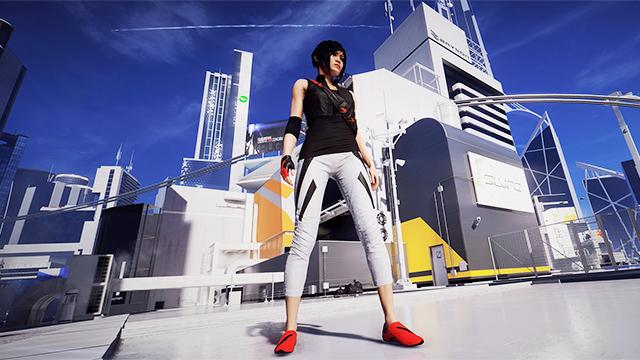It’s not Battlefield season, and that means developer EA Dice is busy working on a new game within the once-forgotten Mirror’s Edge franchise. Only a few days away from release, Mirror’s Edge: Catalyst is a complete reboot of the original game which came out back in 2008. There are a lot of eyes on it, especially due to the severe game drought of this year's summer.
It’s been roughly two days since Mirror’s Edge Catalyst was unlocked early through EA Access. While I was only provided with a six-hour trial version of the game, it was enough for me to digest the gameplay and see what the PC version had to offer. Suffice it to say, I am not pleased with my experience. I’ve played the original Mirror’s Edge for many hours and it ran smoothly on my computer. While I would love to say that about Mirror’s Edge Catalyst, the truth is that the game has poorly optimized textures and made me rather frustrated as I struggled through my first playthrough.
Last week, I departed with my GTX 980s and purchased two GTX 1080 video cards. I enjoy running games in SLI mode and have a great setup to back it up, one that I’ve poured hours of my soul into. Technically, I should be able to run every game without any performance hiccups. I understand that some games simply don’t have an SLI profile and am willing to make the compromises necessary. Since a single GTX 1080 is quite formidable on its own, I figured I would just run Mirror’s Edge Catalyst in Single-GPU mode.
As soon as I started the game, one of the first things I noticed were the 30 FPS-locked cutscenes. I recalled how Mirror’s Edge Catalyst was being released for consoles alongside the PC version and figured this was just one of those things resulting from a tight development schedule. But let's be real here, most people are no longer comfortable playing at 25-30 FPS on their gaming computers and there shouldn’t be a reason to, especially with all of the affordable high-end hardware that is available in today’s market.
Immediately after the introductory cutscene came to a conclusion, I was thrown into the game world and forced to exit the area. While running around, I noted how my framerate would drop from 60 FPS all the way to 42 FPS before jumping back up again. The frame drops were sparse yet persistent enough that even the most mild-mannered person to throw a fit at the stuttery mess. Keep in mind, this was with every setting maxed out.

Although Mirror’s Edge Catalyst comes with a slew of graphical options that the player can tweak, nothing I tried seemed to fix my issue. This included turning off VSync and even going into the NVIDIA Control Panel to change the maximum pre-rendered frames to 1 instead of what the application defaults to. To top it off, the game was eating up an unfair portion of my RAM and I recommend anyone who plans to purchase Mirror’s Edge Catalyst to have a minimum of 8GB at their disposal.
During my diagnosis of the settings, I discovered there is less stutter when the texture quality is turned all the way down to Low, which allows me to play at a constant 60FPS in exchange for horrendously aged-looking textures. This is odd since I haven’t noticed any texture streaming issues in the game itself. I really enjoyed the gameplay but it doesn’t stand on its own in this shape and form.
The art direction in Mirror’s Edge has always been a highlight, due to its notoriously photorealistic presence. I shouldn’t have to completely turn down the Texture Quality in order to enjoy Mirror’s Edge Catalyst and avoid frame drops, especially not with my shiny GTX 1080 at hand. If you’re a console gamer, you have the luxury of usually being able to avoid frustrating concerns such as these. I know that last month I played through Uncharted 4: A Thef's End and had a blast without a single performance issue, something I rarely encounter in today's PC climate.
At its current stage, the only thing saving the PC version of Mirror’s Edge Catalyst is a day-one patch, whether it’s in the form of a game update or an NVIDIA driver fix. If this is the case, then it probably wasn’t a good idea to release the game five days early. An SLI profile would also be a splendid addition for the sake of extra horsepower being unlocked, but I’m not holding my breath on that. Despite the performance issues, I realize that EA DICE has created a rich environment for open-world parkour activity to take place in. As disappointed as I am, I am optimistic that these issues will be addressed in the short-term future.







